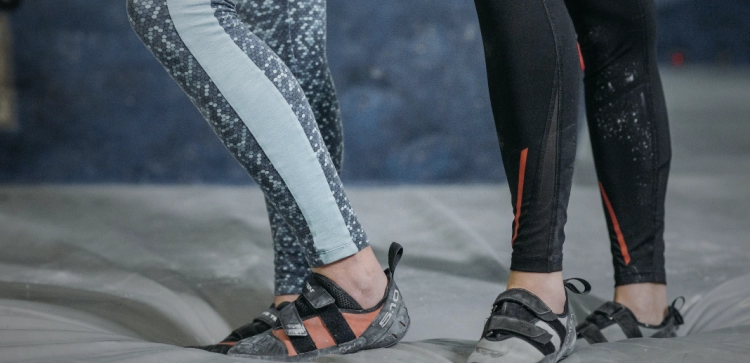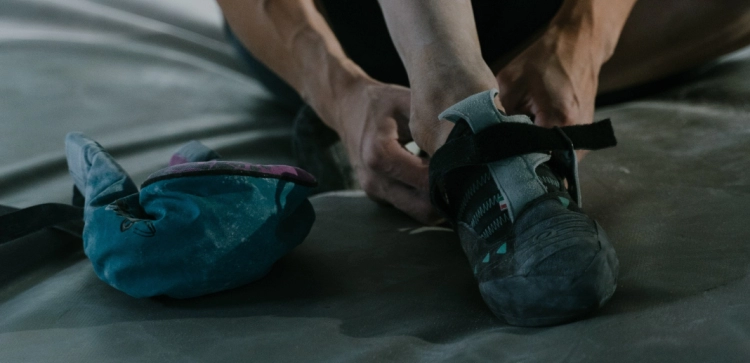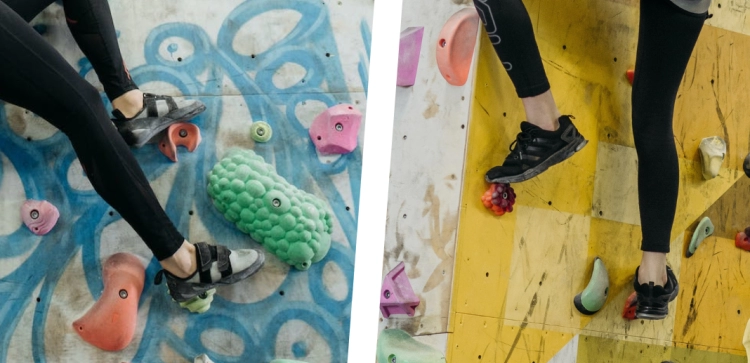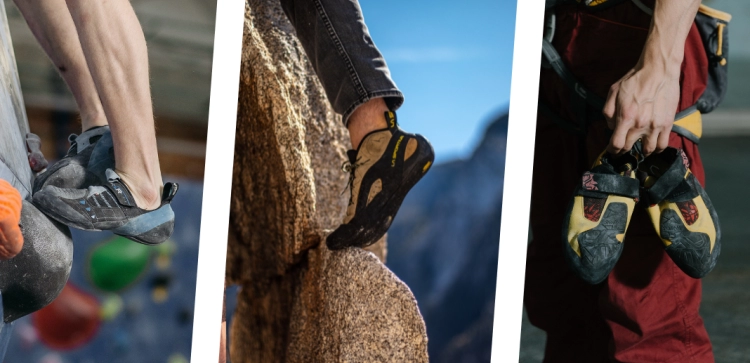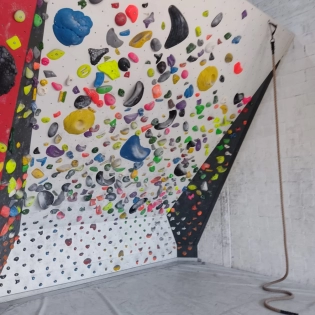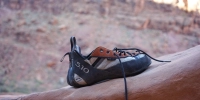Climbing Shoes Sizing: Is Going Half A Size Bigger A Better Fit?
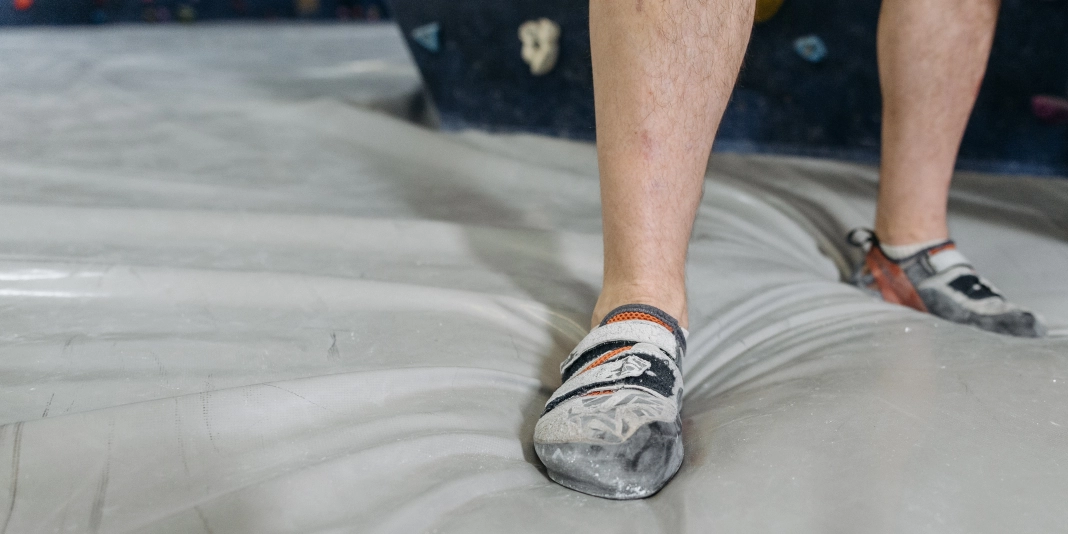
As climbers, we understand the significance of finding the right gear to enhance our climbing experience. Among the essential pieces of equipment are climbing shoes, which directly impact our performance on the wall. While there are various factors to consider when choosing the right pair, one common dilemma arises: What size should we get? Let's delve into this topic, exploring the advantages, potential drawbacks, and suitability of wearing shoes that provide a bit more room.
- Understanding Climbing Shoe Sizing
- Is It Bad To Wear Shoes A Half Size Too Big?
- Wearing 1 Size Bigger Shoes: Finding The Balance
- Finding The Balance
- Slightly Too Big Shoes: The Case For Beginners
- Can You Wear A Size Bigger Shoe For All Types Of Climbing?
- Embracing Personal Preference: Trusting Your Comfort
- The Final Verdict
- Commonly Asked Questions
- Is It Bad To Wear Climbing Shoes A Half Size Too Big?
- Can I Wear Climbing Shoes One Size Too Big?
- Are Climbing Shoes Half Size Too Big Suitable For All Types Of Climbing?
- Is It Okay To Wear Shoes A Size Bigger For Beginners?
- Will Wearing Shoes Half A Size Bigger Affect My Climbing Performance?
- How Do I Know If I Need To Wear Climbing Shoes Half A Size Bigger?
- Can Wearing Shoes One Size Bigger Improve Blood Circulation?
- Should I Stick To My Regular Size Or Go Half A Size Bigger For Bouldering?
- Community Questions · 0
Understanding Climbing Shoe Sizing
Climbing shoe sizing differs from regular shoe sizing. Climbing shoes are designed to fit snugly, with little to no extra space inside. This tight fit is crucial for maximizing sensitivity and precision during climbs, especially on small footholds and challenging routes. However, a too-tight fit can lead to discomfort, pain, and decreased performance, especially during long climbing sessions.
Is It Bad to Wear Shoes a Half Size Too Big?
Wearing climbing shoes half a size bigger can have its advantages, especially for climbers with wider feet or those who prefer a more comfortable fit during long sessions. While it might seem counterintuitive, a slightly larger shoe can provide better blood circulation and reduce the risk of painful hot spots.
For climbers with wider feet or those who prioritize comfort, choosing climbing shoes half a size bigger can be a game-changer. Here are some notable benefits:
-
Enhanced Comfort: Shoes with a bit more room provide relief during long climbing sessions and multi-pitch routes, reducing foot fatigue and discomfort.
-
Improved Blood Circulation: A slightly bigger size allows for better blood circulation, reducing the risk of painful hot spots and potential numbness.
-
Easier Removal: Shoes that aren't overly tight are easier to slip off during rests, giving your feet a break between climbs.
-
Accommodation for Swelling: Feet may swell during extended climbing sessions, and shoes half a size bigger can accommodate this change.
Wearing 1 Size Bigger Shoes: Finding the Balance
Going up a full size from your regular street shoe might offer more toe wiggle room, but it could also compromise your ability to edge and maintain precision on tiny footholds. Finding the right balance between comfort and performance is key when considering shoes one size bigger.
While wearing shoes one size bigger offers additional comfort, it's essential to assess how it might impact your climbing performance. Here are some factors to consider:
-
Precision: Shoes with extra space might sacrifice some precision on technical climbs that require precise foot placements.
-
Edging and Smearing: Climbing shoes half a size bigger might not provide the same level of support for edging and smearing on small footholds.
-
Personal Preference: Climbing shoe fit is a personal choice, and some climbers may prefer a snugger fit for specific types of climbing.
Finding the Balance
Ultimately, the decision to wear climbing shoes half a size bigger depends on your individual preferences, climbing style, and foot shape. Some climbers find that a slightly roomier fit improves their overall climbing experience without significantly compromising performance. Others may opt for a snugger fit to maximize precision on demanding climbs.
As a climber with wider and flat feet, I have experienced the benefits of wearing shoes half a size bigger. It has allowed me to enjoy longer climbing sessions without discomfort and has not hindered my performance on any climbs.
Slightly Too Big Shoes: The Case for Beginners
For novice climbers, shoes that are slightly too big might be forgiving during the learning process. As you develop your climbing technique and footwork, you'll gain a better understanding of the ideal shoe size for your climbing style.
Can You Wear a Size Bigger Shoe for All Types of Climbing?
While wearing a size bigger shoe can be advantageous for certain climbing scenarios, it might not be suitable for all types of climbing. For technical climbs that require precise foot placements, a snugger fit is often preferred for enhanced sensitivity and control.
Embracing Personal Preference: Trusting Your Comfort
Ultimately, the decision to wear climbing shoes half a size bigger or stick to your regular size or to downsize comes down to personal preference. Trusting your comfort and listening to your feet during climbing sessions will guide you to the right choice.
The Final Verdict
Choosing climbing shoes half a size bigger can be a viable option for climbers seeking additional comfort during extended climbing sessions. It is crucial to strike a balance between comfort and performance, ensuring that your shoe choice aligns with your climbing goals and preferences. Remember that individual foot shapes and climbing styles play a significant role in determining the ideal shoe size.
Whether you prefer a snug fit for precise movements or slightly more room for all-day comfort, finding the perfect fit ensures you can focus on your climbing and make the most of your time on the wall.
Commonly Asked Questions
Is it bad to wear climbing shoes a half size too big?
Wearing climbing shoes half a size bigger can have both advantages and disadvantages. While it offers better comfort and circulation, it may compromise precision on small footholds.
Can I wear climbing shoes one size too big?
Wearing climbing shoes one size bigger can be a personal choice, but it might affect your performance on technical climbs. Consider your climbing style and preferences when choosing the right shoe size.
Are climbing shoes half size too big suitable for all types of climbing?
Climbing shoes half a size bigger might work well for certain climbing scenarios, such as multi-pitch routes or long bouldering sessions. However, they might not be ideal for technical climbs that require precise foot placements.
Is it okay to wear shoes a size bigger for beginners?
For beginners, slightly bigger shoes might offer more forgiveness during the learning process. As you gain experience and improve your footwork, you can determine the best shoe size for your climbing style.
Will wearing shoes half a size bigger affect my climbing performance?
Wearing shoes half a size bigger can provide a more comfortable fit, but it might slightly affect your climbing performance on more technical climbs. It's essential to strike a balance between comfort and precision based on your climbing goals.
How do I know if I need to wear climbing shoes half a size bigger?
If you have wider feet or experience discomfort with regular-sized climbing shoes, trying shoes half a size bigger might be a good option. Pay attention to how your feet feel during climbs and make adjustments accordingly.
Can wearing shoes one size bigger improve blood circulation?
Yes, wearing climbing shoes one size bigger can improve blood circulation, reducing the risk of painful hot spots and enhancing overall comfort during climbing sessions.
Should I stick to my regular size or go half a size bigger for bouldering?
The choice between regular-sized shoes and shoes half a size bigger for bouldering depends on your personal comfort and climbing style. Some boulderers prefer a snug fit for precise movements, while others prioritize comfort during extended bouldering sessions.

